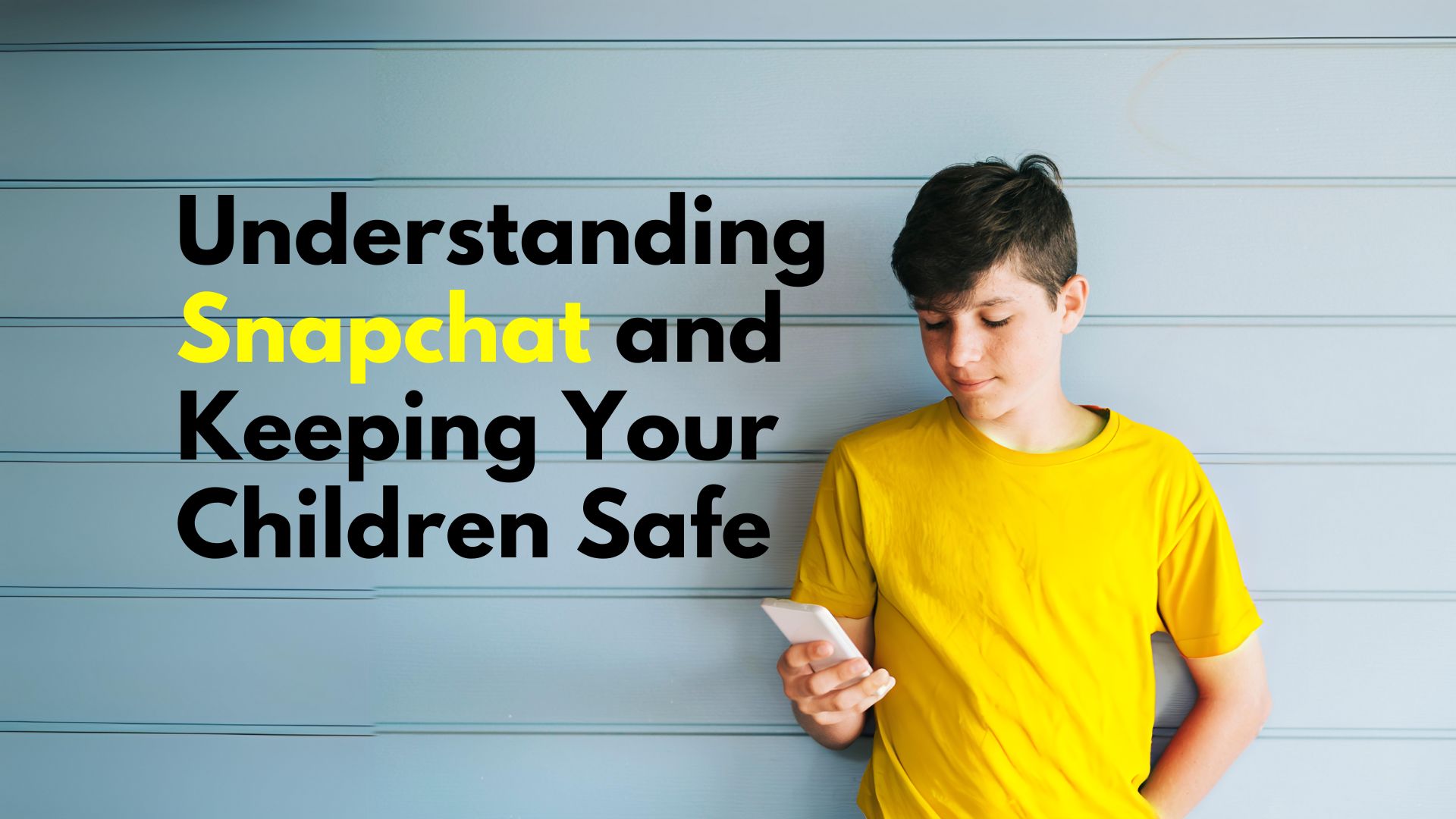We recently hosted a webinar on the critical issue of Snapchat and its impact on our children’s safety. We strongly encourage every parent and guardian to actively educate themselves and engage with their communities about the potential threats and misuse of Snapchat. A great way to start is by checking out Cyber Safety Cop’s recent webinar, “Parent’s Guide to Snapchat.” This webinar offers a comprehensive look at the issues surrounding Snapchat, providing valuable insights into the app’s potential dangers and practical advice on how to protect your children.
Snapchat is a popular app among teens that’s often misunderstood by parents. This blog aims to demystify Snapchat, highlight its risks, and provide actionable advice on keeping children safe.
What is Snapchat?
Snapchat is a social media app that opens directly to the camera, allowing users to take photos or videos (called “snaps”) and send them to friends. These snaps can be decorated with filters, stickers, and text, and they disappear after being viewed for a set amount of time.
Key Features
-
Camera-Centric Interface: Opens directly to the camera for instant snapping.
-
Filters and Lenses: Fun and interactive filters that enhance or alter photos and videos.
-
Disappearing Messages: Snaps disappear after being viewed, adding a layer of perceived privacy.
-
Stories: Collections of snaps that stay visible for 24 hours.
-
Chat Function: Allows text communication that can also disappear.
-
Location Sharing: Option to share real-time location with friends.
Why Teens Love Snapchat
Snapchat is designed to be quick, fun, and visually engaging. Teens appreciate its immediacy, the playful filters, and the way it allows them to share moments without the permanence of other social media platforms.
The Risks of Snapchat
Despite its popularity, Snapchat poses several risks, particularly for younger users:
-
Disappearing Messages: The temporary nature of snaps can encourage risky behavior, as teens might send inappropriate content believing it will vanish.
-
Location Sharing: Sharing real-time locations can expose users to potential dangers, especially if they have strangeFfrs on their friends list.
-
Privacy Concerns: Even with disappearing messages, Snapchat collects and stores a significant amount of user data.
-
Inadequate Parental Controls: Snapchat’s Family Center offers limited oversight, only showing who the child is friends with and allowing some content restrictions.
-
“My Eyes Only” Feature: Allows users to store snaps in a password-protected folder, potentially hiding inappropriate content from parents.
Recommendations for Parents
Given these risks, it’s crucial for parents to approach Snapchat with caution. Here are some recommendations:
-
Delay Usage: Consider not allowing your child to use Snapchat until they are 18. The risks are significantly higher for younger teens.
-
Enable Ghost Mode: Ensure the location-sharing feature is turned off to protect your child’s privacy.
-
Monitor Activity: Regularly check who your child is friends with on Snapchat and have open discussions about their interactions.
-
Educate About Risks: Talk to your child about the potential dangers of sharing personal information and meeting strangers online.
-
Use Parental Controls: Utilize the Family Center to keep an eye on your child’s friends list and restrict sensitive content, even though these controls are limited.
- No Snapchat until College: Due to disappearing images and videos, the prolific presence of sexual exploitation, and fentanyl-laced drugs, we do not recommend letting a child have it before college.
- Leverage OurPact: OurPact is a parental control app that can help monitor your child’s activity on their phone by taking periodic screenshots. However, it may not capture everything due to the fleeting nature of Snapchat content.
Is Instagram a Better Alternative?
While Instagram also has its risks, it offers more robust parental controls compared to Snapchat. Parents can log in as their child to monitor activity more effectively. However, the same caution should be applied regarding private messages and interactions with strangers.
Conclusion
Snapchat’s appeal among teens is undeniable, but so are its risks. As parents, it’s essential to stay informed and vigilant. By delaying access to Snapchat, enabling privacy settings, and maintaining open communication, you can help ensure your child’s safety in the digital world.
As a reminder, don’t forget to check out our recent webinar, “Parent’s Guide to Snapchat,” for a more in-depth discussion on these important topics. This webinar provides a comprehensive overview of Snapchat, its potential misuse, and practical steps parents can take to safeguard their children. By watching the webinar, you will gain valuable insights, learn about the latest trends in Snapchat misuse, and discover tools and strategies to protect your family. The webinar is an excellent resource for any parent or guardian looking to stay ahead of the curve and ensure their children’s safety in an increasingly digital world.
Additionally, consider reading “Parenting in the Digital World: A Step-by-Step Guide to Internet Safety (3rd Edition)” by Clayton Cranford, the nation’s leading law enforcement educator on social media and online safety for children and recipient of the National Bullying Prevention Award. This book answers parents’ most important questions about making their children safe online.
Spread the word to other parents and guardians by sharing this blog to raise awareness about Snapchat-related threats. You can also consider inviting Cyber Safety Cop to your school for the “Cyber Safety Seminar for Parents.” This proactive step equips parents with the tools and knowledge needed to navigate the challenges of the digital age. Led by experienced law enforcement professionals, counselors, and educators, our instructors use real-life stories to resonate with the audience, ensuring the material’s impact and relevance.






